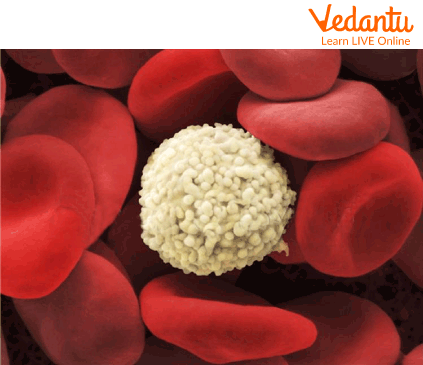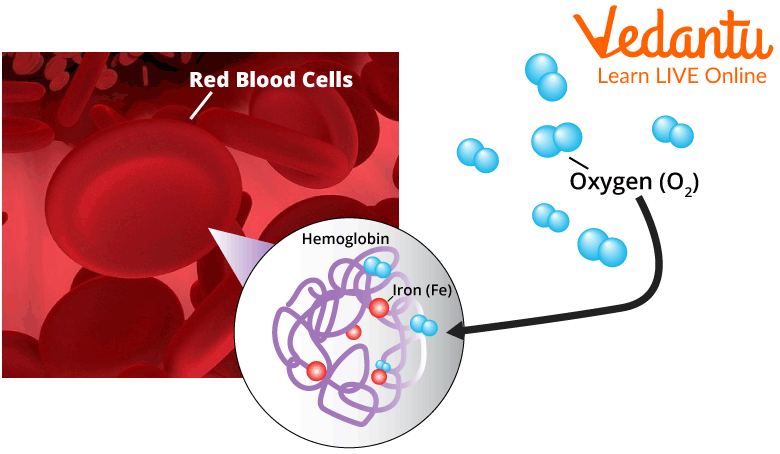




Introduction
Remember when you injured yourself, and a deep red-coloured liquid gushed out of the wound; that red-coloured liquid is known as blood. It is the circulating fluid in our body; that is, it flows in the nerves throughout our body, reaching almost all the cells of our body. Thus, it helps in transporting various substances, such as nutrients in our body, from one cell to another. Thus we can conclude that blood is vital in our body. At this second, we have approximately 5 litres of blood circulating within our body!
Definition of Blood
The fluid circulating in the human body that collects in the heart through the veins and again circulates from the heart to the whole body through the arteries is called blood.
It is a liquid connective tissue. It regulates the temperature of the body and protects the body from diseases. It consists of four things – plasma, red blood cells (red blood cells or RBCs), white blood cells (white blood cells or WBCs) and platelets (platelets).

White Blood Cells and Red Blood Cells.
Interesting Facts About Blood
The amount of blood in the human body is 6-7% of the total body weight.
It is an alkaline solution with a pH of 7.4.
Women have half a litre of blood less than men.
Two types of substances are found in blood, plasma and blood.
About 60% of the blood is found in the form of plasma, and the remaining 40% is in the form of blood.
90% of plasma is water.
Blood cells have three parts: red blood cells (RBCs), white blood cells (WBCs), and blood platelets.
The red colour of blood is due to ferrous ions, which are the colour of haemoglobin (a type of protein found in red blood cells).

Haemoglobin Found in the Red Blood Cells.
The normal blood pressure in the human body is 120/80 mmHg. it happens.
The life span of red blood cells is 120 days.
Functions of Blood
The following are the main functions of blood in the body-
Blood regulates body temperature.
It takes oxygen from the lungs and transports it to other body parts.
It takes carbon dioxide from the cells of the body to exhale and transports it to the lungs.
It takes the digested food in the small intestine and carries it to all body parts.
It takes the waste product urea from the liver and takes it to the kidneys for excretion.
Red Blood Cells (RBCs)
One of the major components of blood are the red blood cells; they are responsible for the red colour of the blood. They have a lifespan of 120 days and then are destroyed and removed from our body, whereas simultaneously new red blood cells are formed in the bone marrow to replace the ones being destroyed. They have an important substance namely haemoglobin about which we will study in the next segment.
Role of Haemoglobin in Blood
The Red Blood Cells have an iron containing pigment named Haemoglobin. The haemoglobin is a very important molecule since it plays an important role in the transport of oxygen, the molecule essentially carries the oxygen molecule from the lungs to the other cells of the body and also carries the carbon dioxide from the cells and to the lungs from where it is discarded from our body.
Facts About Blood Vessels
What are Blood Vessels?
The circulation of blood in the body takes place through the vessels. Those are called blood vessels. There are three types of blood vessels in the human body:
Artery
Vein
Capillary
Artery: The vessels that carry pure blood from the heart to other parts of the body are called arteries. In these, the blood flow is fast and at high pressure. The aorta is the largest artery. Impure blood flows in the pulmonary artery.
Vein: The vessels that carry impure blood from different parts of the body to the heart are called veins. The pulmonary vein contains pure blood.
Capillaries: These are thin blood vessels, in which blood flows very slowly.
Facts:
It takes about 60 seconds for each blood cell to complete one cycle of the body.
There are 5 litres of blood in the normal human body; in each heartbeat, the heart produces about 70 ml. pumps blood.
The normal human heart beats 70-72 times in a minute (60 seconds).
Solved Questions
1. Write one main function of the blood.
Ans: The main function of blood (red blood cells) is to transport oxygen.
2. How many types of blood vessels are in the human body?
Ans: The human body has three types of blood vessels: Artery, Vein and Capillary.
3. Why is blood red?
Ans: Blood is red because the colour of the haemoglobin is red, which is found in red blood cells.
Learning By Doing
Write True or False.
10% of plasma is water.
Blood is a liquid connective tissue.
Blood cells have three parts: RBCs, WBCs and blood platelets.
Summary
Blood plays a very important role in the human body. Red blood cells are filled with haemoglobin and carry oxygen from our lungs to the rest of our bodies. In this chapter, we have studied many things about human blood. Now, you must have understood what is called blood and its facts, functions and many things related to blood.
FAQs on Interesting Facts about Blood
1. What is blood pressure?
When the heart pumps blood into the arteries, the pressure exerted on the walls of the arteries is called blood pressure.
2. What is the study of blood called?
The study of blood is called haematology.
3. What is called the process of blood formation?
The process of blood formation is called hematopoiesis.









